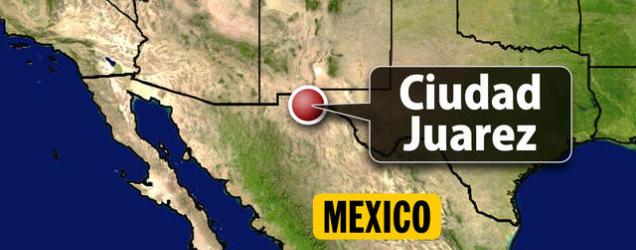Carlos Munoz Burgos (Washington, DC)

Citizen security has become a hot topic in the Americas after a steady increase in criminality and violence over the past decade. Of the world’s 50 most violent cities, 45 are in the Americas and 40 are specifically in Latin America. Currently, Brazil, Mexico, and Colombia include the highest number of violent cities per country on the continent with 14, 12, and 5, respectively.
After holding the title of “murder capital of the world” for three consecutive years, Ciudad Juárez ceded this uncomplimentary branding to San Pedro Sula, Honduras, which, in 2011, had a homicide rate of 159 per 100,000 inhabitants. In 2012, Ciudad Juárez has seen a significant reduction in the number of homicides, which has been mainly attributed to the assumption that the Sinaloa Cartel has emerged triumphant in its war with the Juárez Cartel. Nevertheless, at 55 homicides per 100,000 inhabitants, Juárez is still suffering a violence epidemic and much needs to be done to decrease homicide rates in this city.
The Perfect Storm
It is often clamored that economic growth leads to prosperity – if not in the short-term, in the long-run. Unfortunately, this never occurred in Ciudad Juárez despite the economic boom that the maquiladora industry brought to this city more than 20 years ago. In fact, economic growth, along with huge inflows of people from other parts of the country, minimum social, physical, governmental and security infrastructure, and the collapse of the federal government’s political control, created the perfect storm for violence to ensue.
For example, the growth of the maquiladora industry in Ciudad Juárez created a striking urbanization of the city without proper planning. Minimum physical and educational infrastructure has meant that children of maquiladora workers are left unattended, while their parents work. With no proper schooling or proper role models to follow, these children have become easy recruits of street gangs who directly cooperate with drug cartels. Often, these gangs provide what their families have not been able to deliver; that is, an identity and a sense of belonging.
In terms of security infrastructure, an underpaid and inefficient police has set the stage for additional violence. First, an underpaid police shows how economic growth has not trickled down to every sector of the population. As a result, police forces in Ciudad Juárez have generally been corrupt: With a monthly salary averaging $350, they do not have an option other than to accept bribes, ranging from $200 to $400, from the cartels in order to subsist. Second, police forces are not well trained, and thus, are highly inefficient. On August 30, 2010, approximately 10 percent of Mexico’s federal police force was dismissed, including the head of Juárez Federal Police, for failing basic competence tests.
In an effort to curb violence, President Calderon deployed the army to Ciudad Juárez in 2008. Today, more than 10,000 soldiers handle tasks in Ciudad Juárez that would normally fall under the responsibility of the police. These tasks include conducting security patrols, making traffic stops, and manning checkpoints. However, this did not reduce violence in Juárez; in fact, in some instances it further aggravated it, with several incidents involving the military in human rights violations.
All the above, combined with lack of accountability and governance, greatly benefited local drug cartels, who until recently were engaged in a continuous battle to control profitable drug routes to the United States as well as to a booming local drug market. These cartels would not be as powerful as they are if circumstances were more promising for people in Ciudad Juárez.
There is hope ahead
Last year, 1,976 people were killed in Ciudad Juárez. This represents a 45% decrease from 2010, and a 24% decrease from 2009. Additionally, as of September 2012, Ciudad Juárez has witnessed 658 murders, an inconceivably low figure when compared to numbers in previous years. However, despite the drop in the number of murders in Ciudad Juárez this year, its homicide rate still remains high at 55 per 100,000.
As stated above, the main theory attributed to the reduction of violence in Juárez this year is the presumable triumph of the Sinaloa Cartel over the Juárez Cartel. This monopolization of power and control of the illicit market and drug trafficking routes by the Sinaloa Cartel has scaled down an ongoing turf battle that in the 2008-2011 period resulted in more than 9,000 homicides.
However, violence already started declining in 2011 – albeit at a lower rate – when Julian Leyzaola took over as Police Chief. His “iron fist” approach and tough reputation, along with his criticized military tactics which have allegedly included torturing suspects, may have aided in reducing crime in Ciudad Juárez. Also recently, the local government in Juárez has been spending 1 billion pesos (approximately a third of its annual budget) on an allegedly renewed 2,300-officer police force. Juárez’s police force has also been strengthened with 106 brand new Ford pick-up trucks that were handed by Juárez mayor Héctor Murguía a few weeks ago. Unfortunately, police officer salaries are still low, and spending cuts have had to be made in other areas to subsidize police force expenditures.
Heavy central government investment has also been credited with contributing to violence decline in Ciudad Juárez. Through its Todos somos Juárez (We are all Juarez) program, the Calderon Administration has so far channeled approximately US$400m, about twice the city’s annual budget, to the city for investment in education, health, community affairs, and infrastructure projects. These projects have certainly had a positive effect in Juárez, as they have brought opportunities and relief to some communities.
What next?
The recent decline in violence has revived Ciudad Juarez’s nightlife and brought hope to its citizens. However, widespread poverty and lack of opportunities– the root causes of the problems in Ciudad Juárez – still must be addressed to continue reducing violence in this northern city.
President-elect Enrique Peña Nieto has a major challenge ahead of him to consolidate the gains achieved in Juarez so far. Nevertheless, channeling funds for investment in social, physical, governmental and security infrastructure will not suffice to achieve sustainability in Juarez. That is, if citizens do not feel safe and if small businesses do not invest their resources in their city, significant change will not occur. Furthermore, focus should be placed on providing opportunities – safe spaces, education, jobs – for youth, the most vulnerable population and the main targets for recruitment into organized crime.
Finally, the new Administration will need to find support from its northern neighbor, the United States, in issues regarding weapons-flow control and drug consumption – the demand side of the equation.
Carlos Munoz Burgos, Program Associate for Communities in Transition Division, Creative Associates International
Creative’s Current Programming: The USAID/SICA Regional Youth Alliance (AJR), implemented by Creative, the program is working towards reducing the risk factors that motivate youth to get involved in violence and crime including gangs. AJR provides sub-grants and technical assistance for the development and implementation of Municipal Crime Prevention Plans in the municipalities of Santa Ana, Chalchuapa and El Congo. Under another component of the AJR program, Creative supports the Central America Integration System SICA to implement the Central America Security Strategy, the development of a regional Observatory (OBSICA), SICA´s Consultative Council, the development of Central American Youth Movements against Violence (CAYMAV), as well as the adoption of a Juvenile Justice Sub Regional Policy.
The Youth Movement Against Violence was first created in Guatemala in 2009 as an initiative of Creative/USAID under the Youth Challenge Program. Later, the movement was established in El Salvador (2010) and Honduras (2011) under the AJR USAID SICA Program. In 2012, Creative and USAID, under Alcance Positivo, created the Movement in Panama; and later under AJR USAID SICA, established the national chapters in Costa Rica, Belize and Nicaragua.
